So the other day I had to take out an unsecured loan to put gas in my lawnmower, and it made me think of my old man, who whenever he lent me his ’81 Caprice Classic always stipulated I had to fill the tank…which he would first run dry (How’s it goin’ down there, Dad? Hot enough for ya?).
By Paul Mavis
Still, cruising around in that swank ride (it was two-tone black and gray; I thought it looked like a Rolls), the windows down, the setting sun reflected on that long, polished hood, the V8 underneath purring along, the sensation of piloting that big car down the road to anywhere I wanted to go was one of the most primal expressions of personal freedom and power that I can remember (the other was smashing my Big Wheel into a parked car).
…which somehow brings me back to Warner Bros.’ boxed set Cult Camp Classics Vol. 3: Terrorized Travelers. Why it brings me back to this DVD set I can’t remember how—it’s been a tough week (Wait: yelling dad. car. gas. bodily harm. Freud. Got it). Packaged under their thankfully discontinued Cult Camp Classics line—that word “camp,” jesus—Cult Camp Classics Vol. 3: Terrorized Travelers includes: 1957’s Zero Hour!, directed by Hal Bartlett, written by Airport‘s Arthur Hailey and John Champion, and starring Dana Andrews, Linda Darnell, Sterling Hayden, and Elroy “Crazylegs” Hirsch; 1967’s Hot Rods to Hell, directed by John Brahm, written by Robert E. Kent, and starring Dana Andrews (again), Jeanne Crain, Mimsy Farmer, Paul Bertoya, Gene Kirkwood, and Laurie Mock; and 1972’s Skyjacked, directed by John Guillermin, written by Stanley R. Greenberg, and starring Charlton Heston, Yvette Mimieux, James Brolin, Jeanne Crain (again), Rosie Greer, Walter Pidgeon, Leslie Uggams, and Susan Dey. It’s a fun exploitation triple feature for arm-chair travelers who can’t travel any more because of the real terror out there at the pumps.
Click to order Cult Camp Classics Vol. 3: Terrorized Travelers at Amazon:
ZERO HOUR!
More than ten years after the end of WWII, former Royal Canadian Air Force squadron leader Ted Stryker (Dana Andrews) is still battling horrific memories of his service. Having indirectly killed six of his men due to an error in judgement (going for a primary target, Stryker led his men too low in a fog bank, where they then crashed into the ground), Stryker has been powerless to shake this devastating memory, causing him no end of trouble in his post-war personal life. Unable to hold onto steady employment, Stryker’s marriage is now about to end, as well. Coming home after finally winning another chance at a job, Stryker finds a note from his wife, Ellen (Linda Darnell), telling him that’s she’s leaving him and taking their young son Joey (Raymond Ferrell). Stryker catches up with the plane before it departs, and rides along, hoping to convince Ellen to come back with him now that “things will be different.”
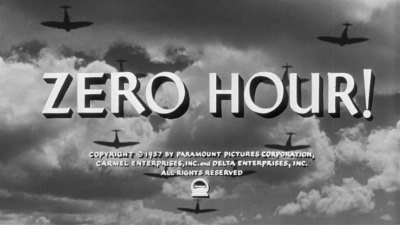
Unfortunately, disaster strikes when passengers start to come down with severe food poisoning from tainted fish. Ted and his wife are fine, having ordered the lamb, but young Joey is critically ill, as are many on board…including the pilot, Captain Bill Wilson (Elroy “Crazylegs” Hirsch) and First Officer Walt Stewart (Steve London). Although Dr. Baird (Geoffrey Toone) is on board, there’s little he can do but instruct Stewardess Janet Turner (Peggy King) to find anyone who can fly the plane. But when Stryker is brought into the cockpit, he’s terrified of the challenge before him—as well as riddled with self-doubt after years of personal failure. Convinced there’s no other option, he takes control of the plane, with his wife helping out on the radio. As a vicious rain and ice storm rages outside (preventing them from landing in Calgary and forcing them over the mountains to Vancouver), Captain Martin Treleaven (Sterling Hayden), a former colleague of Stryker’s during the war, tries to hide his contempt and defeatism as he attempts to talk Stryker down through the difficult flight and almost impossible landing.
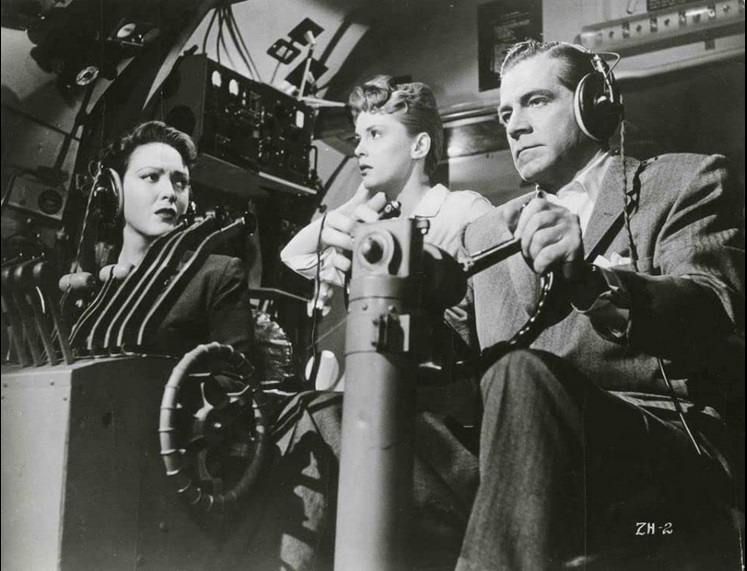
If the hysterical disaster movie spoof Airplane! had never been made, 1957’s Zero Hour! might have been remembered as a competent, straightforward thriller that Paramount put out to ride the wave of John Wayne‘s earlier successful airplane disaster flick, The High and the Mighty. Watching Zero Hour! now, though, it’s almost impossible to enjoy it on its own terms because the viewing experience has been polluted by Airplane!‘s enduring popularity (get it soon on physical media, though; the “cancel culture” vultures have been circling it these past few years).
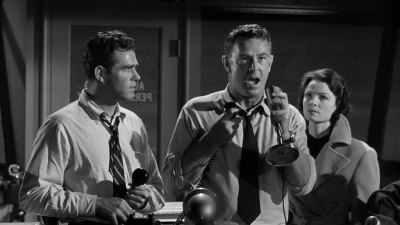

The makers of Airplane! lifted not only the plot from Zero Hour! but also entire chunks of dialogue, so much so that they had to secure the remake rights from Warner Bros. and Paramount to head off any potential lawsuit. With so much directly copied for Airplane!, anyone now coming to Zero Hour! has an impossible job of seeing it outside of its more famous spoofy remake, and instead for what it actually is: a brisk, suspenseful, tightly constructed thriller that isn’t meant to be ironic or funny at all. In Zero Hour!, when Captain Wilson asks young Joey Stryker if he’s ever been in a cockpit before, what are we supposed to do now but giggle? And when Sterling Hayden, in a performance that might be the only “camp” element in the movie (on second thought…it’s just his usual ham sandwich bit), ponders that maybe he picked the wrong week to give up smoking, or that he’d like to buy Ted a drink and shake his hand, you’re paralyzed with laughter…but only because you’re remembering high-on-glue Lloyd Bridges hanging upside down, or Robert Stack acting even more constipated than usual.
RELATED | More 1950s film reviews
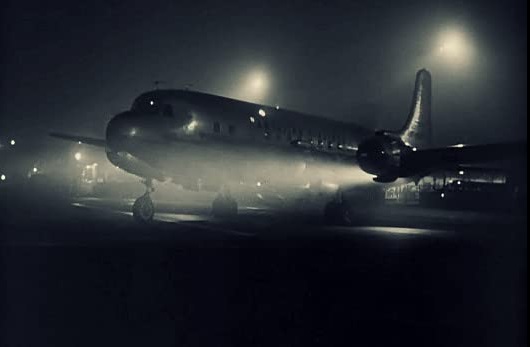
Taken on its own, Zero Hour! is a surprisingly effective and competent thriller that benefits from a clean, focused narrative, and plenty of realistic technical jargon (a hallmark of Arthur Hailey’s novels). Dana Andrews, a talented actor who was always underestimated, had by this time fallen out of the top line of “A” list actors (alcoholism and subsequent poorly chosen roles led to mostly “B” work by the mid-50s). Maybe some of those personal and professional setbacks are reflected in his tense, unhappy mask of a face—quite effective in liming Stryker’s nervous, self-doubting, self-hating loser.
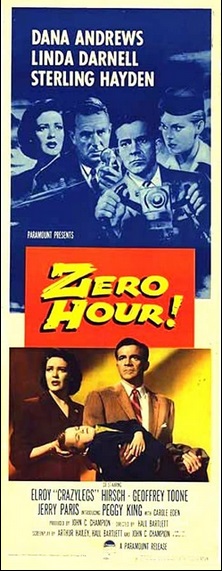
Stryker, who’s committed the worst 1950s societal sin any “Greatest Generation” war vet could perpetrate—he’s failed to live up to his responsibilities as a nation builder and family man, squandering his military training—is the key element to the Zero Hour! working, and Andrews is perfectly cast (we can’t help but associate the character with Andrews’ earlier role in the classic The Best Years of Our Lives). Technically, Zero Hour! is more than competent, with tight editing and lensing by director Hall Bartlett and cinematographer John F. Warren that nicely builds the suspense (there’s a great moment where the pilot remembers eating the fish, with Bartlett then quick cutting to a shot of Joey breaking his toy airplane). However, it’s Stryker’s character, and his eventual salvation through a willingness to quit being a self-doubter, that holds the picture together. Far from “camp,” Zero Hour! is a nicely serviceable, unpretentious thriller that unfortunately has the specter of a much more famous spoof hanging over its shoulder.
Click to purchase Zero Hour! on DVD at Amazon:
HOT RODS TO HELL
Traveling businessman Tom Phillips (Dana Andrews again…and let’s go a little easy on Mr. Andrews’ rouge, mascara and eyeshadow, okay boys?) can no longer cruise up and down the Eastern seaboard: he was critically injured in a car accident. While not paralyzed, Tom’s back has been severely strained, forcing him to give up his career. The injury, however, has done more to Tom’s mind than his back (shades of Zero Hour!…), causing Tom to be querulous and anxious, doubting his own confidence, and making him a moral coward. Trying to help him, his wife Peg (Jeanne Crain, in a hilariously unrestrained performance) enlists the aid of Tom’s brother Bill (Harry Hickox) to throw in and buy a thriving motel out in the western desert, hoping to aid Tom’s recovery and give him a new start in life. While Tom is doubtful, Peg gently guides him to the conclusion that running the motel is the only way for Tom to leave behind all the bad memories of his accident, and get on with his life.
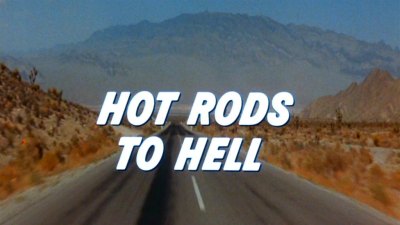
Traveling by car out in the desert, the Phillips encounter a bunch of thrill-kill punks who get their kicks out of scaring the squares. Led by adrenalin-junkie Gloria (Mimsy Farmer) and cold-as-ice rapist Duke (Paul Bertoya), these “animals,” as Tom calls them, engage in ever-increasing threats against the Phillips family, starting with a deliberately thrown beer can at young Jamie Phillips (Tim Stafford). As the punks smell a coward in Tom, they up the antes in their cat-and-mouse games, especially after learning that Tom has bought their favorite decadent hang-out, The Arena, a bar attached to the Dailey Motel that Tom now runs.
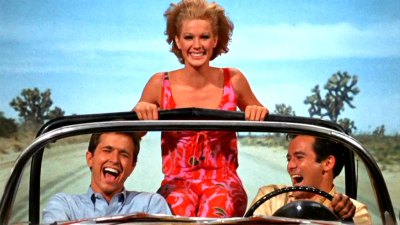
Meeting the slightly gamey Lank Dailey (George Ives), Tom decides to run away from the obvious trouble that will come every night from Duke and his gang at their favorite watering hole. It doesn’t help that Tom’s daughter, bored-to-tears Tina (Laurie Mock), has been defending the brutes all throughout their encounters, and now has become, against her better judgement, attracted to Duke. Will Tom run away from the deadly “chicken runs” that Tom threatens, or will he stand up to the vicious gang?
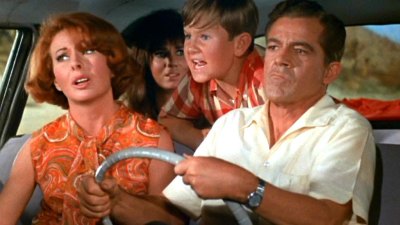
Watching Hot Rods to Hell today, the first thing that always stands out is how clean-cut those thrill-kill punks really are; with their neatly combed pompadours, Pendleton shirts, straight-leg chinos and penny-loafers, they look more like the Welcome Wagon from the Young Republican National Federation, rather than vicious, amoral animals out for go-go-go kicks (that would be the Young Democrats of America…). But I suppose that was the intention behind producer Sam Katzman and writer Robert E. Kent’s story: despite all their advantages (Charley, the gas station attendant says Duke and Ernie come from the richest folks in the area), these kids have nothing to do or strive for in fat, happy post-war America except seeking out cruel, mindless thrills.
RELATED | More 1960s film reviews
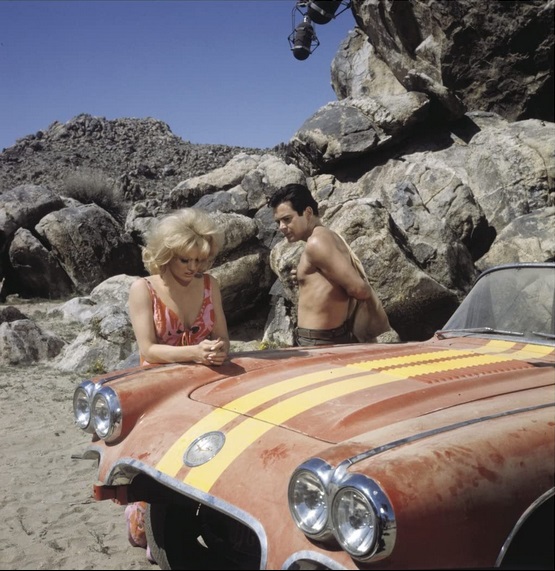
Producer Katzman, as was his usual practice, is careful throughout Hot Rods to Hell to throw bones out there to the “civilized” crowd (i.e.: families that caught this on the bottom of a double-bill somewhere), lamenting the fact that these punks are directionless and morally bankrupt, and that society is wise to their games and looking to squash their dangerous antics (Paul Genge’s highway patrolman frequently pops up to give a lecture on the dangers of a too-loose society). Katzman wants to make sure that the moms and pops out there understand—after, of course, they enjoyed the vicarious mayhem—that this is an isolated problem that can be stopped if we all have the courage to confront these jerks (how many suburban dads girded their loins before pulling out of that drive-in, muttering under their breath, “Just let some punk try that with me!”).
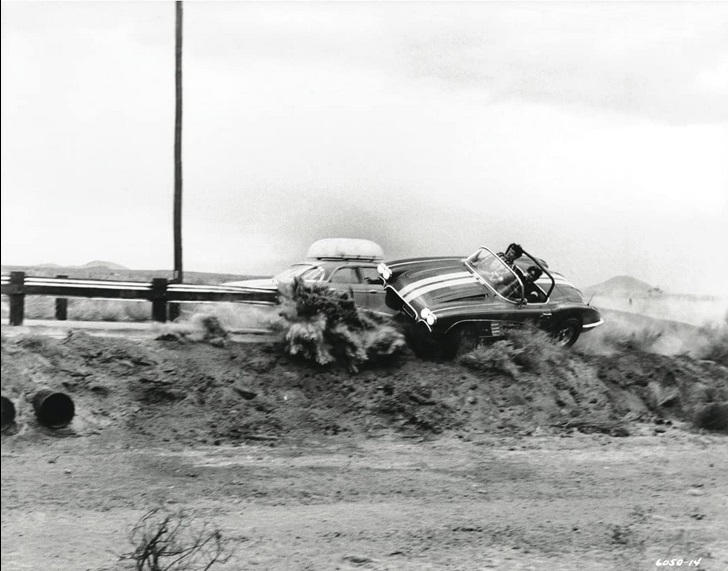
But to his credit, Katzman also makes sure to spread the blame around, not only indicting the road punks who menace innocents on the road, but society as a whole. When the Phillips hang out at a roadside picnic area, hoping that Duke and Ernie and Gloria will get tired and move along, they encounter an obnoxious middle-class “straight” family that Katzman and Kent viciously send up. The father (the always wonderfully grating William Mims) is a drunk who speeds through the picnic area without a thought in the world that he might kill a child playing nearby. Given a ticket by Officer Bill, he contemptuously waves it in front of the cop, sneering that his auto club will take care of it for him.
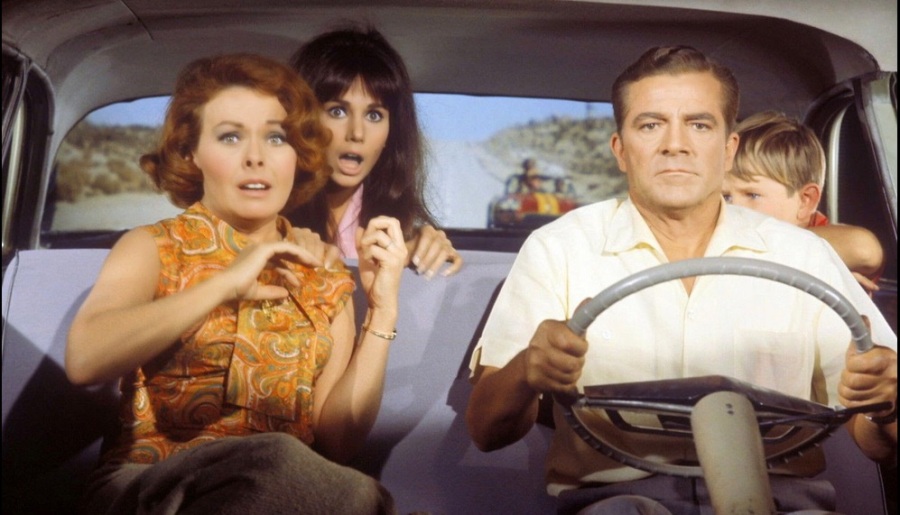
Later, screenwriter Kent (tons of exploitation titles like Rock Around the Clock, Get Yourself a College Girl, and The Christine Jorgensen Story) has the man killed in a roadside accident, the victim of his own recklessness. If square suburban family men like this drive erratically, under the influence of alcohol like Duke and Gloria but blessed with society’s approval of their actions, can you really single out the punks threatening the Phillips as the only menaces on the roads? As well, Kent and Katzman also make sure you know that Duke and Ernie and Gloria’s parents are all social drinkers, too, who get their “kicks” by getting drunk every night at each others’ homes (Katzman knew all those pouty, snippy teenage drive-in patrons had a favorite target of their derision: not speed-crazed moto-gangs…but good ‘ol Mom and Dad).
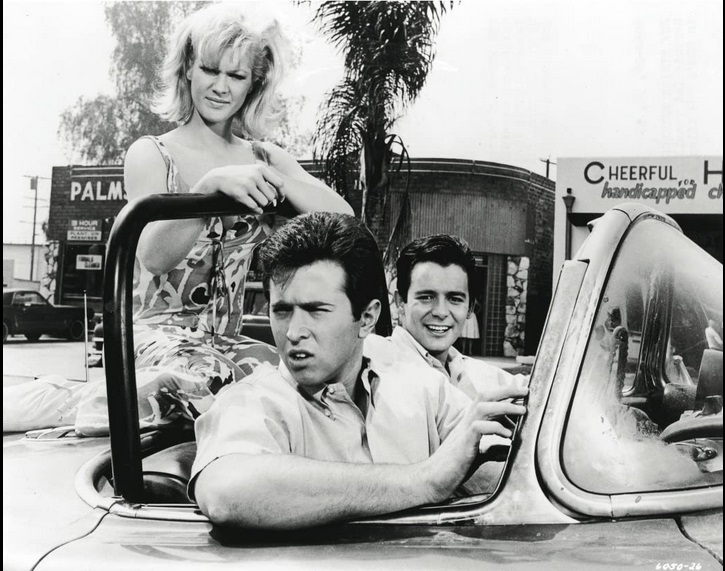
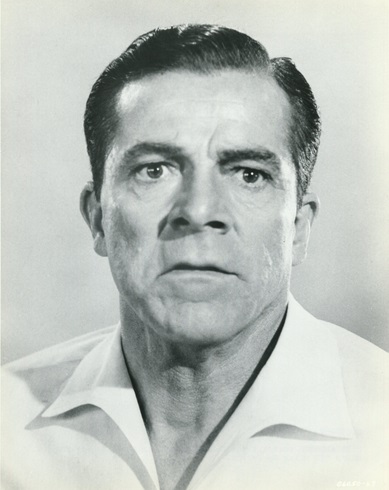
But let’s not get too serious about Hot Rods to Hell. Those now-cliched sociological and psychological sops devised by Kent and Katzman may flesh out Hot Rods to Hell, giving it a bit of welcome depth among the crowd of drive-in trash frequenting the screens in 1966, but it still remains resolutely (and delightfully, I might add), exploitation fare, through and through. And fairly competent junk, at that. Certainly the most interesting aspect of the film is the Gloria character, played by veteran exploitation goddess Mimsy Farmer. Hilarious when, after having sex with Duke, she contemptuously throws his shirt at him and immediately demands, “Where are we going now?” Kent and Katzman give a surprisingly well-rounded look at this bored, sex-crazed kitten. They illustrate her frustrations with small-town life, her boredom and fury at the philandering Duke, and her crazy, jazzed-up penchant for dangerous thrills to compensate for her stilted existence, all with fairly good results (sorry…got serious again).
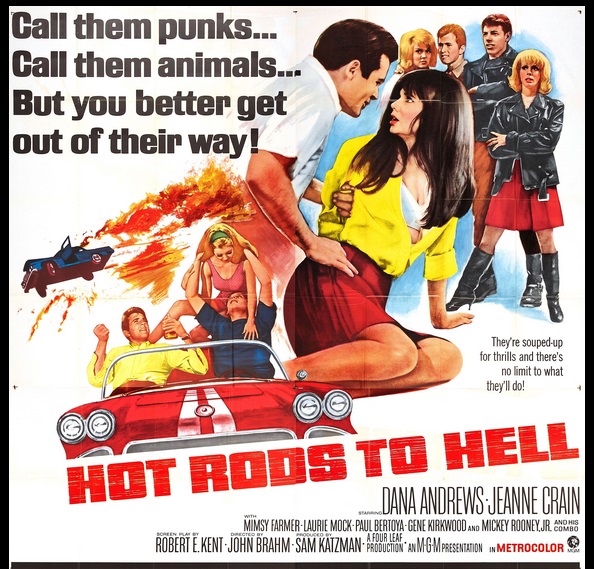
Hot Rods to Hell may be a tad too stretched out (there are just a few too many scenes of Tom battling the hoods on the roads, along with the rather pointless dwelling on musical numbers by Mickey Rooney, Jr. and His Combo at the Arena). And there’s some fuzzy exposition about what exactly Dailey was letting go on at the motel, as well as how Tina’s unspoken desires and frustrations fit in with the family’s encounters with Duke and his gang. All in all, though, Hot Rods to Hell delivers exactly what it promises: fast cars, faster women, and the vicarious thrills of watching jazz-crazed psychos torment a poor innocent American family, all within the confines of a safe, color-soaked G-rated drive-in flick (an amusing thought, now, considering this was originally intended as a TV movie, but was considered “too intense” by the network suits).
Click to order Hot Rods to Hell on DVD at Amazon:
SKYJACKED
Tall, strapping, utterly confident Captain Hank O’Hara (Charlton Heston) is instrumental in getting polite, well-groomed Vietnam vet Jerome K. Weber (James Brolin) on his Global Airways Flight 502 to Minneapolis, after Gary Brown (Rosie Grier) is kind enough to offer his extra seat to the Army officer (Weber was on stand-by, and Brown always buys an extra seat in First Class for his cello). Other First Class passengers are introduced, including Arne Lindner (Walter Pidgeon), a United States Senator, and his son Peter, (Nicholas Hammond); Elly Brewster (Susan Dey), a beautiful hippie chick; Harold Shaw (Ross Elliott), a nervous businessman, and his lovely wife Clara (Jeanne Crain again); the requisite pregnant traveler, Harriet Stevens (Mariette Hartley); as well as the flight crew: stewardess Lovejoy Wells (Leslie Uggams), co-pilot Sam Allen (Mike Henry), and head stewardess Angie Thacher (the always wonderful Yvette Mimieux.
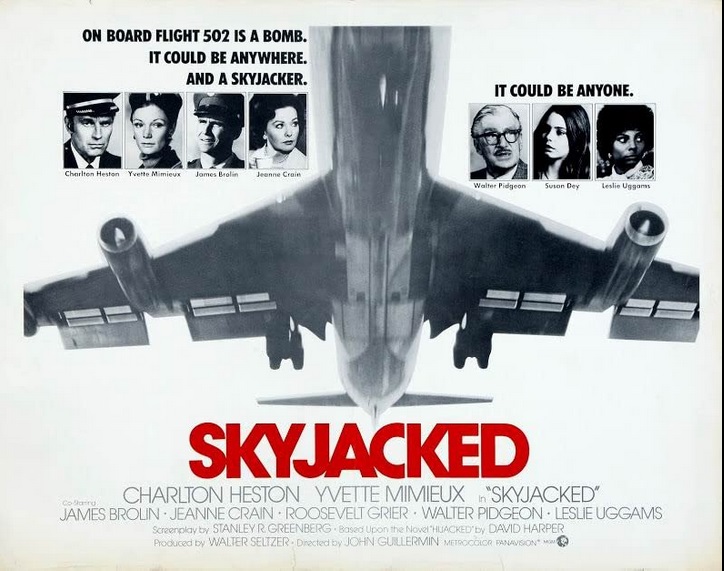
When Elly Brewster finds a lipstick-written warning in the bathroom of a bomb planted on the plane, suspicions immediately fly as to who is the mad bomber on board. The warning also demands that the plane reroute to Anchorage, Alaska. It quickly becomes evident to jazz cellist Gary Brown that his seatmate Weber is dangerously unhinged, and once the plane lands in fog-laden Alaska (after a hairy talk-down with Claude Akins’ radar expert Sergeant Ben Puzo), Weber takes control of the plane, viciously attacking the remaining passengers (O’Hara wisely instructed Angie to get as many passengers in the back of the plane off the airliner while Weber was preoccupied up front). Now, it becomes a battle of wits between the steely, determined O’Hara and the crazed, clearly psychotic Weber as he instructs O’Hara to fly the plane to Moscow.
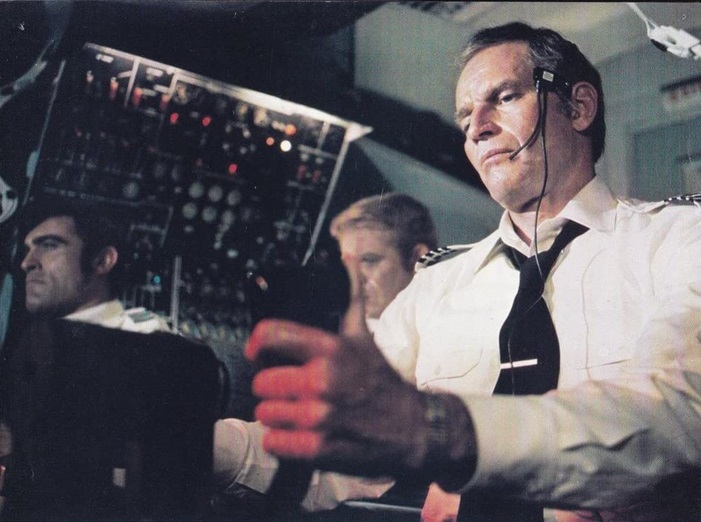
Coming out in 1972 as an obvious attempt to cash in on the phenomenal success of Universal’s Airport in 1970 (as well as capitalize on the then headline-grabbing rash of actual skyjackings), MGM’s Skyjacked maintains a few of the tenants of the coming disaster film cycle that Airport reinvigorated (such as the stock characters introduced to the audience to generate sympathy once the mayhem starts). However, this deliberately lower-budget entry largely bypasses the gloss, class distinctions, romance, and self-consciously humorous shtick that defined the marvelous Airport to instead create a nerve-wracking, polished, gritty little thriller that works as a solid suspense story.
RELATED | More 1970s film reviews
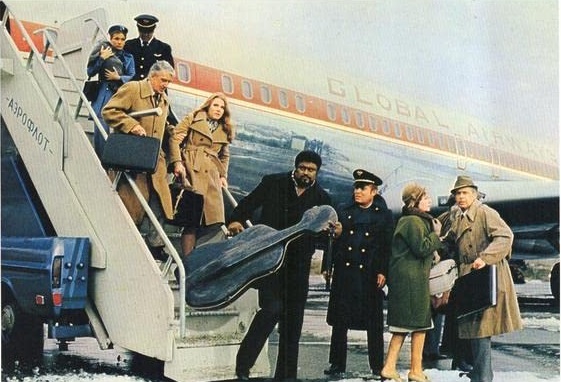
Stock characters may be introduced, but they aren’t picked off one by one, nor are they held up as stereotypical examples of various audience templates (“Oh, she’s the ‘Thief;’ he’s the ‘Complainer'”). They’re never singled out for varying degrees of audience sympathy, depending on what the mad bomber does to them, unlike other disaster films where the pecking order of the stars’ billing (as well as their character’s social status) determines the order of the body count. There’s a brief, intense scene where the various passengers try to subdue Weber; all of them attempt to stop him, but none succeed, not even mammoth Rosie Grier can counter Brolin’s primitive, vicious jungle martial arts. One shot in particular is visceral, with Jeanne Crain desperately hitting Brolin, trying to get him off her husband who has a lockgrip on Brolin’s bag. You’d never see such violent, realistic physical reactions by stars in other disaster movies from this era, as you do in this scene from Skyjacked.
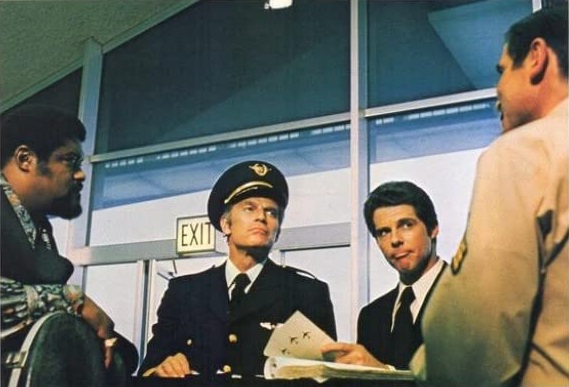
But that’s what works so well in Skyjacked; it doesn’t “camp” up, if you will, the dramatics of the story. This is a straightforward, simple, mean little suspense thriller, extremely well told by director John Guillermin and screenwriter Stanley R. Greenberg (Soylent Green and TV’s The Missiles of October), and unpretentiously unembellished. I’ve always been a big fan of the underrated Guillermin. Of course most people probably know him from his co-directing duties on future disaster movie epic The Towering Inferno (factoring in a star-to-thrills ratio, still the king of disaster movies). However, many of Guillermin’s action films have that clean, cold, professional steel to them that are admirably free of histrionics (two particular favorites: The Blue Max and The Bridge at Remagen), much like Skyjacked.
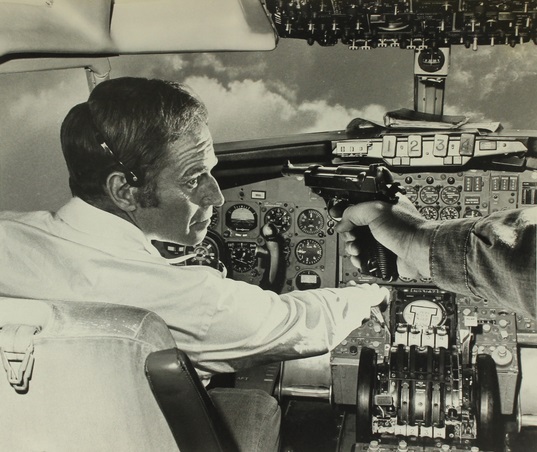
Guillermin resists the temptation that many of these airline disaster movies indulge in when they glamorize the plane itself (remember how positively massive they made the interiors look like in the Airport franchise?). Here, the cockpit is remarkably small looking and cramped (as they are in real life), not the expansive-looking technological wonders you usually see on the screen. Big Heston often has trouble even getting in and out of his seat, and that works wonders with humanizing him in his fight against Brolin.

As well, the rest of the plane isn’t treated as some kind of glamour limo, where the audience can indulge in some wish-fulfillment fantasies of travel before getting down to the action. It looks mundane and routine here, and cramped as well, even in First Class, further heightening the nasty, claustrophobic action once Brolin starts to flip out on the other passengers (MGM’s budget belt-tightening, courtesy of Jim Aubrey, works to this particular movie’s advantage, just as it did with Shaft). Even when Guillermin has the chance to show off the Boeing 707 in establishing shots, he opts instead to give us these truly awe-inspiring shots of the plane bobbing and weaving in the air, performing powerful turns. This plane isn’t the languorous, gleaming Boeing you see in Airport 1975, the one that’s gliding so peacefully that we can’t really believe there’s a hole in it. Instead, Skyjacked‘s plane shots, often in dark, rainy gray skies, illustrate the almost ugly beauty and immense power of these airplanes, making it seem a much more realistic—and dangerous—machine to fly than we’d probably like to imagine.
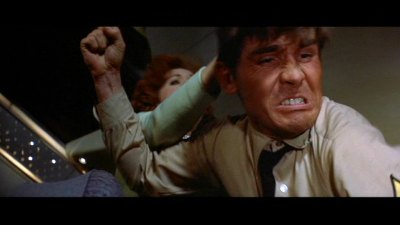
While some of the acting in Skyjacked leaves a little to be desired (Grier, though likeable, is never believable in his role, while Pidgeon’s Mr. Magoo courtly demeanor was annoying as hell in this last stage of his career), Heston and Brolin have a good duet of father/son psycho-dynamics going on that further enlivens Skyjacked. Heston, nicely restrained and in total control, wisely keeps himself low-key against Brolin’s hyper-kinetics. Brolin, in the full bloom of his Marcus Welby, M.D. TV fame, didn’t get a lot of credit from the critics for his performance here, and certainly, there’s an element of eye-rolling and grimacing to it that some viewers today may find amusing (who else is finally sick to death of today’s perpetually ironic movie watchers who laugh at anything made before 1995?).
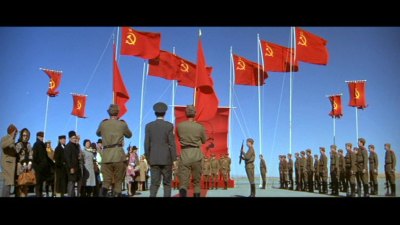
However, I find his energy here quite good, with the extra level of nastiness he brings to the Weber character well played off his established good-guy persona (for Marcus Welby, M.D. fans in 1972, his turn here was a bit of a shock). When Brolin strides down the red carpet of one of Guillermin’s letter-perfect The Manchurian Candidate-inspired dream/psychotic episode sequences, Brolin’s over-eager smile sickly pasted on his sweating, pale face, he’s perfectly in key with Guillermin’s intentions. Skyjacked was a big hit for MGM 50 years ago this coming May, but it’s rarely mentioned when discussions of 70s disaster movies come up. That’s a shame—it’s one of the better examples.
Click to order Skyjacked on DVD at Amazon.
Read more of Paul’s film reviews here. Read Paul’s TV reviews at our sister website, Drunk TV.

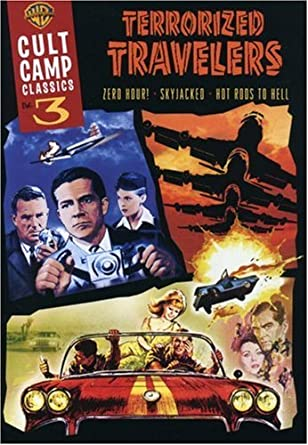
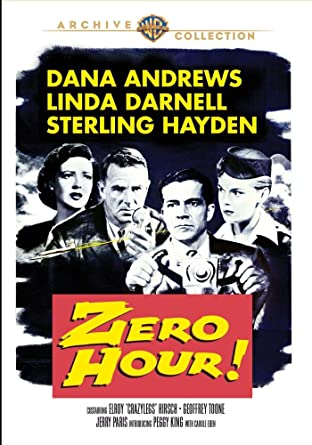
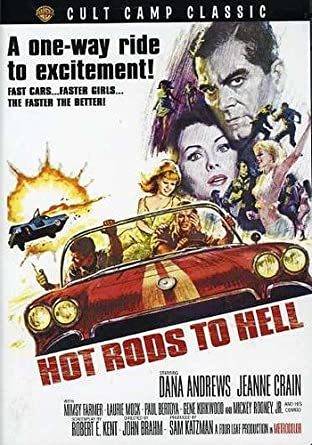
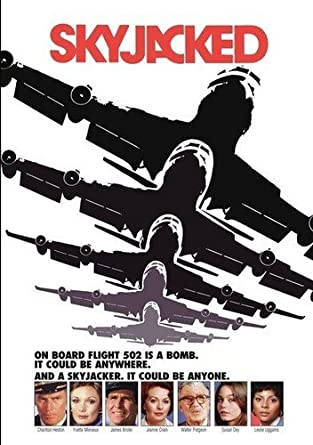

Poor Dana Andrews not only fell off the “A” list but had to spend the last few decades of his career playing sniveling, ineffectual characters in both TV and movies. By the early 1970s he was reduced to soap operas (the short-lived Bright Promise on NBC) but rebounded a bit to appear in a few movies and prime-time TV shows in the later ’70s and 1980s.
LikeLike
Not quite anything with Dana Andrews, but almost, and Zero Hour is far better than anyone have been led to believe. Paul takes it apart and puts it back together.
LikeLike
[…] on Two-Minute Warning, Rollercoaster, When Time Ran Out…, The Beasts are on the Streets, and Skyjacked to get you up to speed…and to quadruple our hits for […]
LikeLike
My thought on Zero Hur and Dana stands, and while I have never seen Skyjacked, my thought based on Paul’s review is, I should see it, and will do so. Now, Hot Rods To Hell sends a negative vibe, and his name is Sam Katzman. Pass, and much worse than working for Albert Zugsmith who has some seriously worthwhile credits. Sam was just an old career killer.
LikeLike
”Hot Rods To Hell” may seem ”campy” to some, but I’ve always liked it. The performances are good-especially those of Mimsy Farmer and Laurie Mock-who, the same year would switch roles, Farmer playing the virginal innocent, and Mock the ”wild, kicks seeking teenybopper”. And, Jeanne Crain’s performance can be excused thanks to the many close-ups of her still beautiful face. As for the production, it’s well photographed in excellent color. That’s enough for me to give it a ”Thumbs Up”.
LikeLike
”Hot Rods To Hell” may seem ”campy” to some, but I’ve always liked it. The performances are good-especially those of Mimsy Farmer and Laurie Mock-who, the same year would switch roles, Farmer playing the virginal innocent, and Mock the ”wild, kicks seeking teenybopper in ”Riot On Sunset Strip” also from Katzman. . And, Jeanne Crain’s performance can be excused thanks to the many close-ups of her still beautiful face. As for the production, it’s well photographed in excellent color. That’s enough for me to give it a ”Thumbs Up”.
LikeLike
[…] fiction, adventure, and disaster genres, with big, fat hits like The Omega Man, Soylent Green, Skyjacked, The Three Musketeers, Earthquake, Airport ’75, and […]
LikeLike